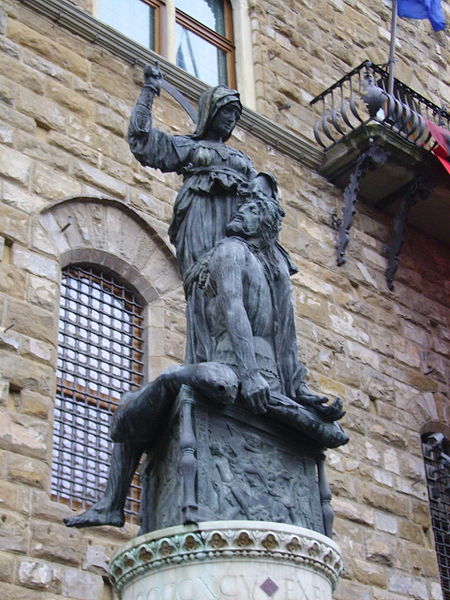Difference between revisions of "Judith and Holofernes (1460 Donatello), art"
| Line 17: | Line 17: | ||
[[Category:Judith--art (subject)|1460 Donatello]] | [[Category:Judith--art (subject)|1460 Donatello]] | ||
[[Category:Holofernes (subject)|1460 Donatello]] | |||
[[Category:Holofernes--art (subject)|1460 Donatello]] | [[Category:Holofernes--art (subject)|1460 Donatello]] | ||
Latest revision as of 08:17, 21 December 2020
Judith and Holofernes (1460) is a sculpture by Donatello, at Palazzo Vecchio (Sala dei Gigli), Florence, Italy.
In this celebrated Renassaince work, Donatello made Judith a personification of his own town, Florence, as a symbol of liberty and public virtue. The statue was originally commissioned by Cosimo de' Medici as a decoration for the fountain in the garden of the Palazzo Medici-Riccardi. In 1495, the sculpture was placed on the Piazza della Signoria, at the side of main door the Palazzo Vecchio, in memory of the expulsion of Piero di Lorenzo de' Medici from Florence and the introduction of the Florentine republic under Girolamo Savonarola. The statue was later moved to the courtyard inside the Palazzo Vecchio, and still later into the Loggia dei Lanzi. In 1919, it was then placed on the left side of the Palazzo Vecchio until it was replaced in 1988 by a bronze copy and the original, after restoration, was given the current location, in a room inside Palazzo Vecchio.
